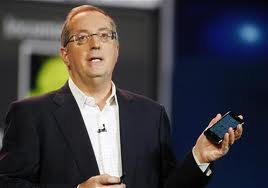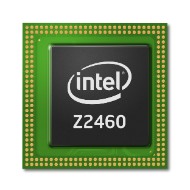CEO Paul Otellini brings out Lenovo, Motorola as first smartphone partners
Intel president and CEO Paul Otellini used his keynote speech at the International Consumer Electronics Show to roll out new partners, products and reference designs as the chip company ramps up an aggressive push into tablets, smartphones and ultrabooks.
While the company has been participating in all of these spaces, with varying degrees of success for years, this is one of the biggest concentrated pushes from the company and one that appears to be ready to bear some immediate fruit.
Smartphone partnerships
Two key players came on stage to show prototype smartphones that they said will be shipping later this year, possibly by the end of the summer, powered by the next generation Intel Atom processor Z2460 platform, formerly code-named “Medfield,” Atom processors.
The first on stage was Liu Jun, Lenovo senior vice president and president of Mobile Internet and Digital Home where he showed the pending Lenovo K800 smartphone, using the Atom processor. That will run the Android operating system. Expected to ship in the second quarter of this year the phone will run on China Unicom’s 21Mbs network and includes support for HSPA+ the Lenovo LeOS user interface for a localized experience in China.
The second is with Motorola Mobility and is a much more complex relationship. The two have amulti-year, multi-device strategic partnership that will also include tablets. Otellini said “Our long-term relationship with Motorola Mobility will help accelerate Intel architecture into new mobile market segments.”
Motorola will be building Android devices using Intel’s Atom processors in both the smartphone and tablet space. The companies will collaborate across hardware, software and services, according to Sanjay Jha, chairman and CEO of Motorola Mobility.
Intel has made several products aimed at establishing itself as a provider of core technology in the cellular handset market over the last decade, with very poor results. However it has never had two major partners like Lenovo and Motorola not only on board but ready to ship products in the near future.
Strategic Reference Designs
Aside from the two key partners Intel has also delivered a pair of reference designs, one for tablets and one for smartphones, in order to help customers quickly build a phone that can also accept any innovation the partner may have internally.
The Intel Smartphone Reference Design features a 4.03-inch high-resolution LCD touch screen for crisp text and vibrant images, and two cameras delivering advanced imaging capabilities, including burst mode that allows individuals to capture 15 pictures in less than a second with 8-megapixel quality.
There is also a tablet reference design. A demonstration on stage had a Clover Trail processor running a tablet that had Microsoft’s Windows 8 operating system and Intel said that Clover Trail-based systems would support the Metro user interface from Microsoft as well as be compatible with millions of Windows applications.
Reference designs have long been a staple in Intel’s arsenal, providing a quick easy way for OEMs to enter a new or emerging space using Intel technology. The company faces an uphill climb in this market due to the firm establishment of ARM-based devices in the market already.
It appears that Intel’s long push for energy efficiency, and renewed push on advanced graphics will help it in this space but the battle here will be an interesting one, and one that for the most part Intel has lost the previous encounters.
Ultrabooks Galore
Ukltrabooks, for those that do not know, is a new and emerging class of notebook computers that closely resemble the shape and form factor of tablets but bring much more to the market. While smartphones, and phones in general, is a space Intel has struggled to enter and tablets are still a relatively new market, ultrabooks are right in the company’s wheelhouse.
The concept was introduced just over half a year ago and the company said that there are already 75 models in the pipeline, with virtually all of its major notebook partners involved. Dell showed one that it will be shipping next month, the new XPS 13, a sub-3lb system, that is less than half an inch think at its thinnest point and is powered by Intel’s i7 processor.
However Intel said that future ultrabooks will be powered by its future 22nm 3-D processor codenamed Ivy Bridge, due later this year. If you are wondering what advantage Intel gets by pushing processors down to smaller sizes, one is that they are faster because the signals have shorter distances to travel.
Intel showed a pair of prototypes on stage, one that really caught my eye was the one that allowed a user to flip the display over and turn it in to a tablet system. While I am sure this will not be for everyone I believe that people that need a full keyboard sometimes and want tablet functionality the rest this will be a strong selling point.
I will be very interested to come back to CES next year and see how well Intel has succeeded in getting the tablet and phone OEMs to adopt its technology. We will probably get a good feel for its acceptance later this year at the company’s annual developer forum.









[…] 2012 International CES. He showed off the first Intel-based smartphone and also spoke a bit …Intel Aggressively Pushes Smartphone, Tablet Vision at CESMobile Sports ReportCES: Intel tries to stay relevant in mobile eraSFGate.com (blog)Motorola, Lenovo […]